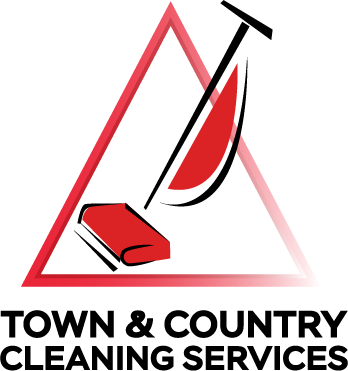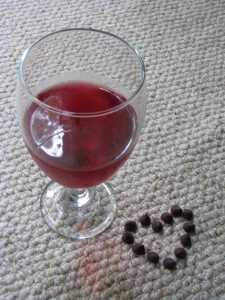Red wine spilled on my white carpet–HELP! Carpet Spotting Info found below
Carpet spotting on my new-to-me carpet: how do these things happen to me? I am having this great party to celebrate my new condo when an elbow gets jostled and a deep crimson blob of wine is now staring up at me from my formerly perfect white carpet! What do I do?
- Don’t Panic
- Pray that your carpet has a healthy coat of protective Teflon™ or ScotchGuard™ or other carpet protection still in place
- ABSORB as much as possible by blotting into clean, dry towels or other cloths
- Some people report good luck with carpet spotting for wine by diluting the spill with club soda and absorbing with salt as the next step. No club soda? Read on, in either case but do see the CAUTION about oriental rugs.
- Do NOT scrub (see our earlier post about spotting carpets).
- Wait, do NOT run for that carpet spotter just yet.
- The following steps may be used (after reading our cautions below) to continue with Carpet Spotting:
- Dampen the spot with plain, cool water and use a white towel or other absorbant cloth to gently blot the stain and re-absorb the colored liquid–you are attempting to wick the diluted wine up into the cloth, so stop before it becomes saturated
- Repeat and continue as long as colored liquid is being absorbed into the towel. Change towels as needed. You may try standing on the towel to hasten the absorption, but do not use a scrubbing action at any time.
T & C Principle: damage may result from what you add –
that may worsen the problem. Remember some of those retail carpet spotters add protectant on top of whatever remains of the spill, possibly ensuring that it cannot be completely removed.
Further carpet spotting: If the carpet is a synthetic (e.g. polypropylene or nylon) your best bet for carpet spotting is to use a laundry pre-spray for wine stains, such as Wine-Away™ or Charlie’s Soap Laundry Pre–Spray, then rinse and blot as in steps 8 and 9. Household-strength hydrogen peroxide may help remove any remaining stains; The peroxide breaks down naturally into water and oxygen and does not require rinsing. Test in an inconspicuous place to assure no dye transfer or loss takes place.
CAUTIONS for do-it-yourself upholstery or carpet spotting:
Carpet spotting CAUTION: If the carpet is wool, a wool blend or an oriental rug, we recommend calling your carpet cleaning professional (like Town & Country Cleaning Services) as soon as possible. You can certainly perform steps 1 through 3 on all rugs to help limit damage from further staining. To continue treatment, always test in an inconspicuous place first to observe if bleeding or color loss is likely to occur (each separate color must be tested). Wool and wool blend rugs require that any spotter used (at least any available for retail purchase) be below 8.5 pH to prevent damage, including fiber breakage and loss. In the case of the oriental rug, you need to be prepared to identify and take appropriate action if dye bleeding occurs and to check for color loss, hence our advice to call in a professional before proceding further.
Upholstery spotting CAUTION: these steps are for carpet spotting. If upholstery is involved, you may still follow steps 1 to 3, but due to the potential for water rings or other problems, consult with your certified Upholstery Cleaning specialist before pursuing the other steps for carpet spotting. Just as with special materials found in gowns, the more expensive your fine furniture is, the higher likelihood of a delicate nature and need for greater caution in the cleaning of its fabrics.
Protecting Your Investment
Finally, if you plan on serving wine or deeply-colored food at your next party whether it’s your den, living room or in any room over carpeting or rugs, be sure you ask about protectant when having your carpets (and upholstery) cleaned. Today, the large carpet mills are voiding warranties on new carpet if they are not professionally cleaned using hot-water extraction by a IICRC-certified technician (note, the IICRC is also called TheClean-Trust) every 18 to 24 months. In addition, most mills also stipulate that new protectant must be applied at least every other clean to protect that warranty.
Even if you are not trying to protect a warranty, be sure to consider adding protectant wherever you have focused traffic, such as halls, stairwells, and traffic patterns in heavily-used rooms. Protectant is not an up-charge to enrich the carpet cleaner; when properly applied, this is a vital step to extend the life of your carpet and to continue the valuable factory-built-in protection that likely came with the rug.
To find additional information, explore these professional sources: TheClean-Trust and The Carpet and Rug Institute
Photo Credit: Kelley Taylor

